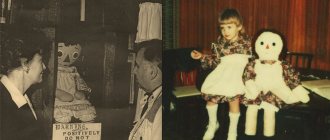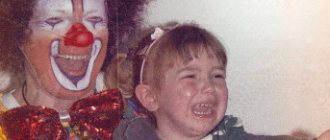Slava Profina 07/25/2018 no comments
3
A type of mental disorder on the neurotic spectrum, manifested in a pathological fear of worms and the ailments they cause, is scoleciphobia. Less commonly, phobia is considered as a symptom of fear of helminth infections and worms of various etiologies, often not only neurotic. According to the Diagnostic and Statistical Manual of Mental Disorders, family members of patients with severe scoleciphobia have an increased risk of developing the disease.
Varieties and causes of occurrence
According to research by psychiatrists, this disease is common in older people. In childhood, many people show interest in understanding the world, studying the surrounding plants and wildlife. Direct perception of the world around us protects children from imaginary fears. Kids often collect worms that interest them after the rain, examine them, and study them. Parents, as a rule, ask the child to remove this muck and, after thoroughly washing their hands with soap, never touch them again.
Feeling the mother’s disgust and fear of worms, the child adopts basic behavior patterns.
From this moment on, the first signs of the disease may appear. Also, the cause of the disease can be any strong emotional shock. For example, from the unexpected tactile sensation of a slippery body or accidentally seeing a picture of crushed caterpillars. Less often, scientists suggest a direct connection with the collective unconscious. In ancient times, worms had a negative response in various legends and myths.
The following types of scoleciphobia are distinguished:
- Scoleciphobia . Fear of worms, both real and graphic, and anything that superficially resembles a worm-like shape.
- Teniophobia . Fear of infection with parasitic worms, helminthiasis. A severe form of neurosis may develop.
- Verminophobia . Fear of infection and death due to maggot venom.
- A type of trypophobia . Panic disorder caused by cluster holes made by worms.
- Insectophobia . A particular type of fear of caterpillars and insects resembling them.
Where does fear come from?
It is difficult to find a person who would feel tenderness in front of worms. For many they cause a feeling of disgust and hostility. However, some individuals experience real horror from the mere sight of worms, let alone touching or handling them. This reaction indicates the presence of a phobia.
According to psychologists, scoleciphobia is not inherent in young children. Kids are rarely afraid of anything. They actively study the world around them, and their fears arise later - after receiving negative experiences.
Very often, small children collect earthworms on the street - they pick them up, examine them, study them, without experiencing any disgust. However, parents, fearing that the child will get sick, may forbid him to play with worms or even touch them. In this way, parents are able to instill in their child disgust, which can develop into a phobia.
The object of phobia is often not only different types of worms, but also leeches, caterpillars, slugs and other crawling invertebrates and their larvae.
Symptoms and clinical picture
The sight of an object of phobia or something similar in appearance to a worm causes severe anxiety in patients. In most cases, the patient realizes that his fear is unreasonable and excessive. However, fear disrupts the usual way of life and causes an asthenizing effect. The asthenic effect manifests itself in the form of a painful condition, leading to increased fatigue and exhaustion of the body.
A characteristic feature of scoleciphobia - the so-called fear of worms - is the desire to avoid contact with a possible irritant as soon as possible.
The range of emotional reactions varies from mild nervousness in response to the actual presence of a worm to panic attacks provoked by a simple graphic image.
Physiological symptoms of fear of worms (phobias) include:
- attacks of dizziness and headache;
- digestive tract disorders: nausea, diarrhea, vomiting;
- surges in blood pressure and rapid heartbeat;
- dilated pupils or darkening of the eyes;
- noise in the head;
- tremor of the limbs;
- suffocation, lack of air;
- increased sweat production, especially in the palms.
Psychological signs include:
- feeling of anxiety and tension;
- anticipation of the development of negative events;
- increased sensitivity to environmental noise;
- loss of concentration;
- obsessive ideas about an unpleasant future.
Treatment
Scoleciphobia can be treated if it is carried out under the supervision of a competent specialist. Timely therapy allows you to cope with fear at the sight of a worm and never again become its hostage.
Psychotherapy
The psychotherapist will help the patient understand where it all began and prescribe the correct treatment
The best way to deal with fears is psychotherapy. If the case is not advanced, then after a couple of sessions the patient stops thinking about his fear and fears of meeting worms.
Psychotherapy offers several proven methods that can overcome scoleciphobia:
- Psychoanalysis. It allows you to identify the real cause of the disorder and eliminate it. During treatment, the specialist asks the patient questions that allow him to get to know his problem in detail.
- Hypnosis. The specialist works directly with the human subconscious. He programs him to believe that worms don't really cause any fear.
- Cognitive therapy. During treatment, the patient has to face his own fears through active interaction with the stimulus.
Upon completion of the full course of therapy, the patient will need constant support from his loved ones. They should in every possible way contribute to the complete recovery of a person from the fear that has been haunting him for a long time.
Drug therapy
If the patient has been afraid of worms for a long time, and is also worried about the fear of worms and other similar creatures, then psychotherapy alone will not always be enough. As an auxiliary treatment, patients with scoleciphobia are offered a course of medication.
Note! Taking medications that are intended to suppress the symptoms of fear is unacceptable without first consulting a specialist. Only a doctor can choose the appropriate medications and determine their optimal dosage.
In most cases, patients are prescribed drugs such as tranquilizers, which eliminate increased anxiety and reduce a person’s acute reaction to meeting an irritant. You can purchase such products at a pharmacy only after providing a prescription written by a doctor.
In addition to tranquilizers, sleeping pills and antidepressants are often prescribed. This combination allows you to achieve maximum calm for a patient who is experiencing severe fear.
Phytotherapy
Herbal teas help calm the nervous system
If the case is not advanced, then a patient with scoleciphobia will be able to get by with treatment based on natural remedies. Herbal medicine has a mild effect on the human nervous system. In addition, it has a minimal list of contraindications for use for medicinal purposes for fear of worms.
Important! Although herbal remedies are relatively safe and available without a prescription, they should only be taken after consulting a doctor.
Herbal remedies may contain the following useful components:
- Chamomile.
- Motherwort.
- Mint.
- Melissa.
- St. John's wort.
- Yarrow.
- Valerian.
- Thyme.
The listed herbs have a positive effect not only on the nervous system, but also on the entire human body as a whole. If you are afraid, it is recommended to pay attention to the collections of these herbs, which should be brewed and drunk instead of regular tea.
Classic syndrome
As a syndrome, scoleciphobia and its common variant, helminthophobia, can be present in the development of diseases in various fields: psychosis and schizophrenia, alcoholism, hypochondriacal personality disorders, a side effect of long-term use of MAO inhibitors or methylphenidate.
The development of phobia is often found in patients who have already been cured of actual helminthiasis.
Helminthiasis is a parasitic disease of plants, animals and humans caused by parasitic worms. The weakened organism of the suggestible patient can provoke induced helminth phobia even after close communication with an authoritative person for the patient or reading media sources.
The syndrome may be accompanied by disturbances of perception (hallucinations and illusions) and thinking. In women, dermatozoal delusion is more common - a variant of tactile hallucinosis, a clinical form of psychosis, the victim of which is susceptible to delusional ideas about infection with parasites. Treatment of the syndrome is effective only in conjunction with therapy of the underlying disease. If you are convinced of a worm infestation, consultation with an infectious disease specialist is required to completely exclude it.
What are the symptoms of this disease?
The mild form of the disease is practically asymptomatic. It is impossible to distinguish a person with scoleciphobia from a person experiencing a mild degree of disgust towards worms.
Scoleciphobia in a mild form does not prevent a person from living a full life; the worst that can happen is a feeling of disgust at the sight of worms. Without encountering these creatures, a person does not notice his illness at all.
In severe scoleciphobia, the following symptoms may occur:
- Unaccountable panic at the mention of worms in a simple conversation with someone.
- Fear of touching objects that may harbor worms. Some people are even afraid to eat fruit or drink water.
- Shortness of breath (attacks of suffocation, or rapid breathing).
- Irregular heartbeat and pressure surges.
- Nausea and vomiting.
- Stomach upset.
- Tremor of limbs
A severe form of the disease must be treated urgently, otherwise the person simply will not be able to live a full life.
Features of treatment
If the phobia disrupts the usual way of life, then the patient should seek qualified help from specialists. When treating humans they use:
- Hypnotherapy. The doctor instills in the patient’s subconscious mind positive thinking and the perception of his fears. This is a complex technique with many nuances. The success of the session depends solely on the experience and professionalism of the hypnotherapist.
- Drug treatment. Used in cases of advanced anxiety, panic and depression. A benzodiazepine group drug can be prescribed by prescription from a psychiatrist. The main effect in this case comes from the process of inhibition of nervous excitation.
- Phytotherapy. The calming effect that people need when treating fears is achieved through a balanced intake of alcoholic infusions and decoctions of dill, lemon balm, hawthorn, peony and valerian.
- Behavioristic technique of “convergence”. Cognitive psychology involves achieving maximum effectiveness from doctor-controlled contacts with the object of a phobia. As a result, new psychological reactions to the stimulus must be formed.
- Art therapy. The patient is asked to make a detailed drawing of the object of anxiety or the most terrible fantasy associated with it. After a detailed analysis and discussion with a psychotherapist, the “ritual” destruction of the image is carried out. Clear associations are formed with the patient destroying his fears.
People have a variety of fears and anxiety states. But in cases where fear transforms into panic and the usual way of life is disrupted, a person needs to seek help from a psychotherapist.
3
Causes of scoleciphobia
There are several reasons that give rise to panic fear of worms:
- Upbringing . This reason has already been discussed above. If one or both parents experience fear or aversion to worms, then the child adopts this behavior pattern.
- Traumatic experience. Strong negative emotions associated with worms can leave a mark on the human psyche. For example, a person in childhood was frightened by the unexpected touch of a worm to the skin or saw a large accumulation of these creatures.
- Impressionability. Impressionable people can develop a phobia even without personal negative experience with worms. The sight of a decaying body infested with corpse worms can evoke strong emotions. Moreover, it is not necessary to see such a picture live. For an impressionable person, a film or photograph will be enough.
Symptoms
Vermiphobia often causes debilitating mental and physical symptoms.
- With Scoleciphobia, a person believes that worms are crawling all over the body. As a result, he may shiver, itch, or wash himself several times a day.
- Crying, screaming, chills, nausea, increased heart rate, and sweating are other common symptoms of this phobia. The person experiences numbness or detachment from reality and cannot express their thoughts clearly.
- Scoleciphobe avoids shoveling and digging up soil or even refuses to use public toilets.
- Obsessive-compulsive disorder (OCD) is another symptom of Scoleciphobia. A sufferer may want to bathe several times a day or take extra precautions, such as cleaning their home and yard and securing doors and windows, to prevent worms from accidentally getting inside.
- Often these people are afraid of seeing parasites in their feces.
Scoleciphobia usually leads to depression. Some vermiphobes drop out of college or refuse certain types of jobs where they might encounter worms. Sometimes weather becomes a triggering factor to the point that the sufferer may insist on moving to a cooler climate to avoid the worms.
Treatment of arachnophobia
The main techniques that have a therapeutic effect on the obsessive fear of spiders:
- Psychotherapy.
- Pharmacotherapy.
- Physiotherapy.
- Biofeedback therapy.
- Reflexology.
- General restorative methods: massage, manual therapy, physical therapy, yoga.
Most often, treatment is limited to psychotherapeutic assistance, but in some cases other methods mentioned above are added to it.
In the overwhelming majority of cases, arachnophobia is completely reversible, especially if a specialist was consulted in the early and unexpressed stages of the development of this painful condition.
Who and how will cure scoleciphobia?
The first step to treatment is realizing that the disease really exists. If a person is aware of the problem, he is mentally ready to get rid of it. Often, diseases such as phobias (especially in their severe manifestations) cannot be treated on their own. From this follows the second step - to realize that in order to fight the disease it is necessary to seek help.
You need to contact a psychotherapist ; he will help you choose individual, most effective methods of dealing with fear.
The doctor will help you figure out what exactly the person is afraid of and what caused the development of the disease. Next, you need to convince the patient that worms are not monsters, but creatures created by nature and necessary for this world. The psychotherapist will help the patient look at his fear from a different angle (rationalization method).
Often, when treating a disease, a cognitive method . The essence of it is to look your fear in the eye. Under the supervision of a doctor, the patient comes into contact with worms and caterpillars. At first, this is a lot of stress for a sick person, however, over time, his body begins to adapt and get used to things that cause fear. The protective mechanism of the psyche is triggered - after some time, the patient’s nervous system simply stops responding to the source of fear.
The art therapy method helps very well . The patient draws in detail on paper his most terrible fantasy associated with worms. This could be a giant worm monster, a graveyard infested with worms, troupes, wormy food and much more. These fantasies are then discussed with a psychotherapist, and the “ritual destruction” of the drawing is carried out. The picture is the personification of the scoleciphobe’s fear, and the patient will associate its destruction with getting rid of his fear. You need to destroy the picture as emotionally as possible, throwing out everything that has accumulated inside, only then the effect of therapy will be positive.
Treatment of scoleciphobia is a lengthy process, and you will have to contact a psychotherapist more than once. It is very important that the patient is supported by the whole family, but even more important is the person’s desire to be cured, a positive attitude and faith in one’s abilities.
If other methods do not help, the patient is subjected to hypnosis. Under hypnosis, a person is told that there is no need to fear worms.
Drug therapy in this case is undesirable and is used only as a last resort. A severe form of phobia is treated with tranquilizers or sleeping pills. You should not take them on your own - these drugs are addictive. Only a doctor can prescribe a tranquilizer. It should be taken as rarely as possible and only in the prescribed dosage.
How to diagnose scoleciphobia?
Diagnosis of this disease, like any phobia, is a rather difficult process. It is very difficult to diagnose a mild form of scoleciphobia, because it is quite logical that even healthy people experience unpleasant feelings when faced with worms. Many people do not like these creatures, but this does not mean that the person is sick. Only an experienced psychoanalyst can recognize the disease in a mild form.
The severe form of scoleciphobia is much easier to diagnose. A patient, even without psychoanalysis, can say about himself: “I’m afraid of worms until my knees tremble.”







